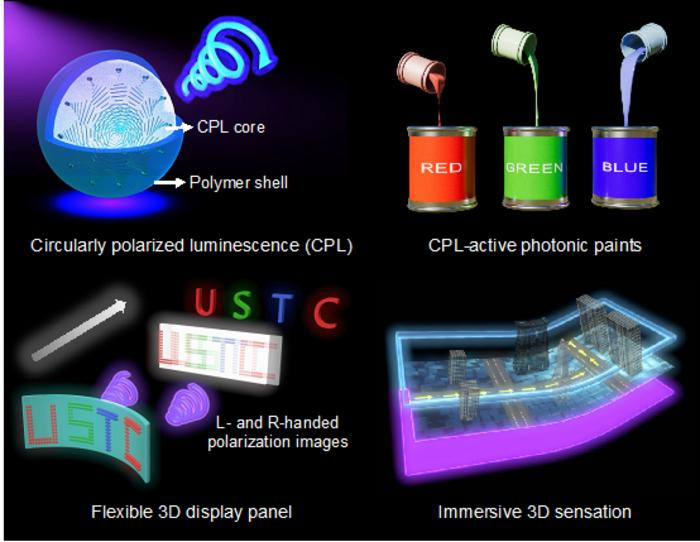Flexible three-dimensional (3D) displays are at the forefront of innovation in the next-generation display technology. They enable the development of versatile and adaptable displays that can be effortlessly adjusted and tailored to suit a wide range of viewing situations.

Printing Circularly Polarized Luminescence (CPL) is used to fabricate large-scale and high-performance integral imaging 3D displays. It is produced by the intrinsic chirality of luminescent materials on moving, deformable, and free-form surfaces. CPL provides a rare optical rotation characteristic to achieve a considerable contrast ratio and wide viewing angle.
Researchers headed by Professor Taotao Zhuang and Professor Shu-Hong Yu at the University of Science and Technology of China have made progress in the field of processable circularly polarized luminescence materials, enabling flexible 3D imaging.
The study published in the journal Science Advances on October 25, 2023, unlocks new possibilities for novel CPL-active materials in advances of both performance and processability with related applications.
The authors introduced a class of CPL-active photonic paints (CPL-PPs) utilizing chiral liquid crystals, enabling the scalable manufacturing of printable CPL-active materials. These paints showcased strong CPL emissions, meeting the required practical performance standards.
This enables the writing of customized graphics directly on a range of substrates such as polypropylene, cotton fabric, and polyester fabric using CPL-PPs to produce meter-long luminous coatings with strong circularly polarized characteristics.
The researchers created flexible 3D display panels featuring two sets of full-color pixel arrays by printing CPL-PPs as pixel arrays on flexible substrates based on orthogonal CPL emission. This approach facilitates the generation of immersive 3D images by delivering separate images with orthogonal circular polarization states to the left and right eyes.

Image Credit: Leo Matyushkin/Shutterstock.com
The researchers also envisaged the incorporation of these flexible 3D display panels into wearable devices, such as smartwatches. This development is anticipated to exert a significant influence on various applications, spanning virtual reality, medical imaging, scientific visualization, and beyond.
This development has the potential to reshape multiple industries and transform the perceptiveness and interaction of humans with visual information and is also appreciated by professionals. This extends the applications of CPL-optic-achievable materials in various fields such as information security, spintronics, quantum computing, biological detection, etc.
Journal Reference:
ZHANG, M., et al. (2023). Processable circularly polarized luminescence material enables flexible stereoscopic 3D imaging. Science Advances. doi/10.1126/sciadv.adi9944.